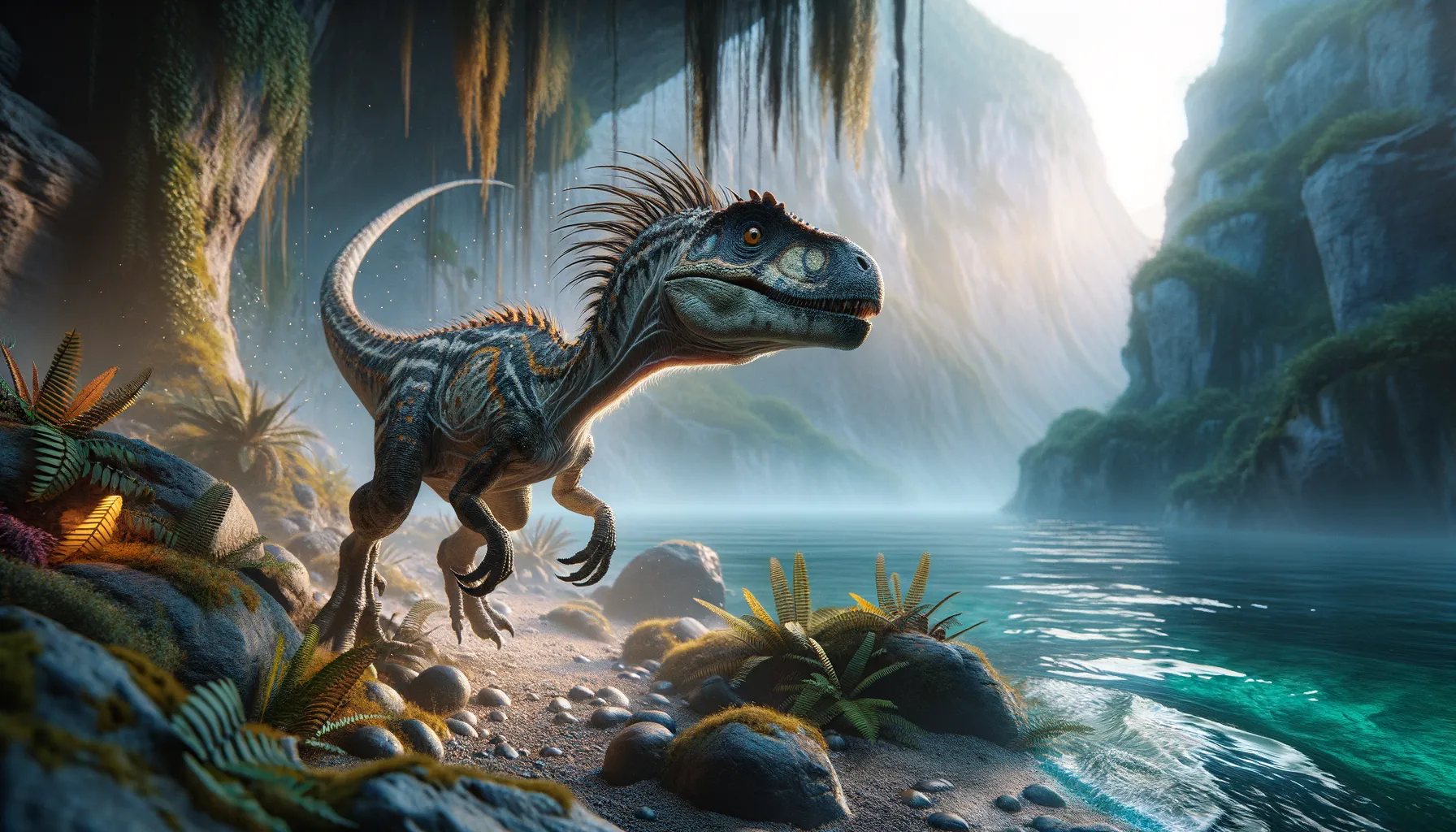
Protorosaurus
The dawn of the reptilian era!
Period
Permian
Length
About 1 to 2 meters long.
Height
Approximately 0.5 meters tall.
Weight
Lightweight, roughly 5 to 10 kilograms.
Protorosaurus was an early relative of modern lizards. It lived during the late Permian period and was one of the first reptiles to show adaptations for a partially aquatic lifestyle, though it was primarily terrestrial. This small, agile creature is known mostly from fossil finds in Europe and exemplifies a transitional form in early reptile evolution.
Diet
Protorosaurus was likely an insectivore, primarily feeding on insects and small invertebrates. Its sharp teeth and agile body made it adept at catching quick-moving prey.
Hunting
This dinosaur was not a pack hunter; it relied on stealth and speed. Hunting was likely a solo activity, giving it the freedom to pursue small, fast-moving prey with agility.
Environmental challenges
Protorosaurus faced significant environmental challenges during its time, including fluctuating climate conditions as the world transitioned between geological periods. Water availability varied, affecting vegetation and food resources. Competition from other reptiles emerging at the same time was also a constant challenge for this small creature.
Speed
Moderate for its era, possibly swift on land.
Lifespan
An average lifespan around 10 to 20 years.
First discovery
Discovered in the early 18th century in Germany.
Fun Facts
- Protorosaurus is one of the oldest known reptiles, living around 290 million years ago during the Late Permian period.
- Despite its name, Protorosaurus was not a dinosaur but a distant ancestor of modern reptiles, showcasing an early stage in the evolution of archosaurs.
- Fossils of Protorosaurus have mostly been found in Germany and parts of the United Kingdom.
- Protorosaurus was a small reptile, estimated to be about 2 meters long, with a long neck that helped it catch prey like small fish and insects.
- The name 'Protorosaurus' means 'first lizard', reflecting its status as one of the earliest known lizards or lizard-like reptiles.
- Its long, slender body and agile movement may have helped it navigate through dense vegetation or waterside environments.
- Protorosaurus is an excellent example of the diverse and varied life forms that existed well before the time of the dinosaurs.
Growth and Development
Protorosaurus grew relatively quickly to improve survival odds in a predatory environment. It likely developed in short spurts, reaching full size sooner to avoid predation. The growth pattern suggests adaptation to quickly shifting habitats and climates.
Habitat
It inhabited semi-arid and coastal regions, capitalizing on both terrestrial and near-water ecosystems. It often found shelter in rocky outcrops and vegetation thickets. These environments provided ample food resources and protection from predators.
Interaction with other species
Protorosaurus coexisted with a range of other early reptiles and small vertebrates. Competition for food would have been fierce among similar-sized species. Some interactions may have involved the predator-prey dynamic, with Protorosaurus both hunted and being hunted.
Natural lifespan
Protorosaurus could live for about 10 to 20 years naturally.
Reproduction
Reproduction was likely oviparous, with females laying eggs in protected grounds. The eggs were strategically hidden to avoid detection by predators. Breeding likely occurred seasonally, synchronized with environmental cues such as warmer temperatures.
Social behaviour
Protorosaurus was probably solitary, coming together with others primarily for mating. There was limited evidence of organized social structures or packs. Its behavior suggests a reliance on self-sufficiency, survival through individual adaptability rather than cooperative strategies.
Fossil locations
Fossils of Protorosaurus have been primarily found in central Germany, in the Kupferschiefer deposits. Some additional specimens have been unearthed in other parts of Europe, providing key insights into its morphology and ecological niche in the late Permian period.
